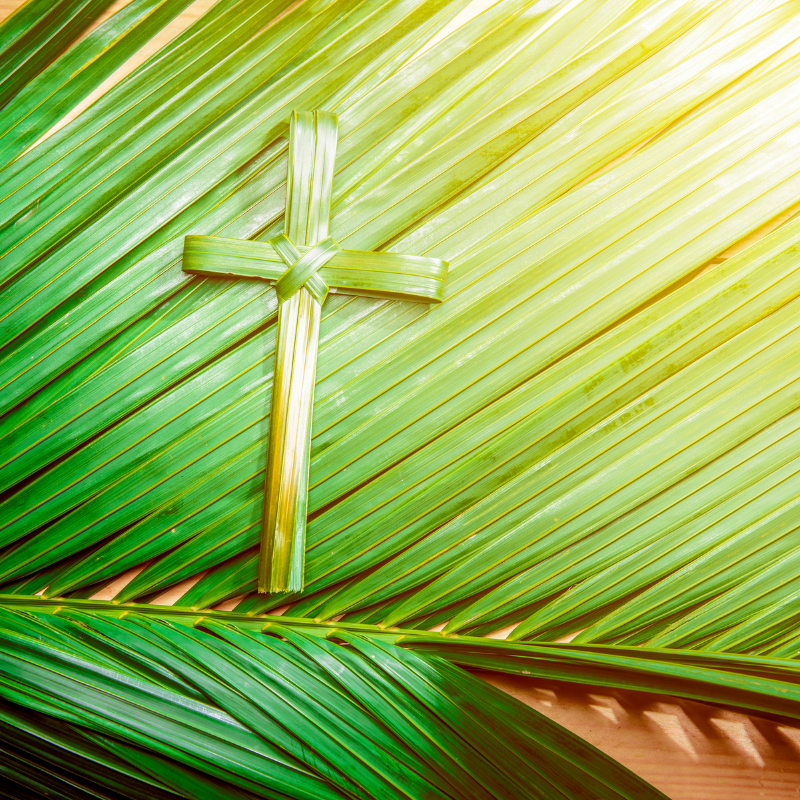Matthew 21:1-11 and Matthew 27:11-54

During the recent pilgrimage to the Holy Land, our itinerary called for us to walk the route of Jesus’ triumphal procession into Jerusalem. But the morning that we were to do the Palm Sunday walk was uncharacteristically cold, raw, and rainy. For the sake of the safety of those who had limited mobility, and the comfort of the rest of us, we abandoned our plans to follow the footsteps of Jesus from Bethany to Jerusalem along the most important parade route in history.
Rainy weather didn’t seem to be a factor that day when Jesus rode into town on a borrowed donkey surrounded by followers and greeted by enthusiastic Jerusalemites. But make no mistake, storm clouds were brewing on the horizon. The Jewish religious leaders who were plotting how to deal with the threat Jesus posed to their authority sensed the gathering storm the closer Jesus came to the city, the way you can smell the rain before it actually starts to fall. The Roman Governor, Pontius Pilate perceived its menace in the rolling thunder of the restless crowds filling the streets for Passover; just one quick lightning strike away from a raging fire of revolt.
Nobody, though, was more aware of the impending storm, than Jesus. He knew that the route that passed through cheering crowds would end at a cross. He knew that some of the very same voices that hailed him as a prophet and savior would soon scream for him to be crucified. He knew that his own disciples would sell him out, deny they knew him and run for cover. No matter that the sun shone down upon the revelers at Jerusalem’s gate, for Jesus there was a rainy day atmosphere to this parade.
Today, crowds still are willing to fill the sidewalks for a parade under blue skies. Very few want to stand out in the cold and damp to see one. In the same way, people enjoy the festive air of the Palm Sunday procession, but avoid the somber story of another parade. A parade where Jesus was accompanied, not by cheering crowds but mocking Roman soldiers. This sad parade wound its way from Pilate’s headquarters to a place named Golgotha. You can still follow that second parade route today through the streets of Old Jerusalem. Its name is the Via Dolorosa; Latin for “the Way of Suffering.” It is not a route many of us would voluntarily take because it defies every natural human instinct to avoid pain and sacrifice.
Palm Sunday and Easter are two of the most popular and well attended services of the year. Between them lie Maundy Thursday and Good Friday—the services associated with the passion and suffering of Jesus. They are two of the least well attended services. Many people go directly from the sunny day parade of Palm Sunday to the glorious dawn of Easter without ever exposing themselves to the dark night of Jesus’ passion and sacrifice in between.
When that happens, it is our loss.
There is a depth of communion with Christ that is only discovered when we have been hard hit by life’s storms and yet, in the midst of them have known Christ’s consolation, even before the storm has passed and the skies have cleared. There is a depth of faith when skies are gloomy that only exists when we can look back to our experiences of being sheltered by Christ as the storms raged around us and within us.
Focusing only on the happy ending while closing our eyes to the sacrifice it took to get there produces a sunny, but fragile optimism that leaves us unprepared for the inevitable tragedies of life, and ill equipped to cope with them. Faith that can see us through the dark times which—for all our efforts to avoid it—will most certainly confront us, is where true hope is found. The sort of hope that we need in this pandemic, that has confronted us in all its terrible reality and repercussions, despite the impulse by some to downplay its gravity.
Those who possess that depth of faith and that expanse of hope are those you will find marching in rainy day parades. They do not demand that the world be as they would have it, but accept the world as it is and live by faith that it can be something more…more like what Jesus meant when he spoke about the kingdom of God coming on earth as it is in heaven. They accept themselves not as they would like the world to imagine them to be, but as they know they actually are—fallible and imperfect—but forgiven and beloved. They can more nearly relate to the brokenness of others with compassion instead of distancing themselves through judgment and condemnation.
So, may we walk together with Jesus in the rainy day parades of Maundy Thursday and Good Friday. The fact that those services will take place on-line instead of in-person will remind us that the dark clouds of pandemic remain. But more importantly, it will testify that it is our communion in Christ, and not those clouds, that will ultimately define our tomorrows. And when the clear skies of Easter eventually dawn, and the darkness of this pandemic has been lifted from our shoulders–may we appreciate in ways me might never have otherwise, what resurrection truly feels like.
Copyright 2020 Raymond Medeiros
Preached as a virtual sermon, April 5 (Palm Sunday) 2020